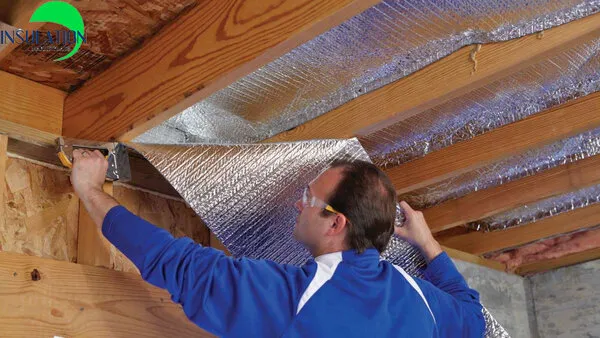Insulation controls indoor temperature properly and makes energy bills lower. Proper insulation is essential because it prevents both heat loss from winter rooms and heat entry from summer rooms. Data from the U.S. Department of Energy shows that 25 percent of house energy loss happens just in the attic area alone. But what Areas of Your Home Need Insulation for the best results? This guide lists the key rooms in your house that need insulation treatment and also gives selection tips for optimal insulation material.
Why Proper Insulation Matters
Insulation helps your house maintain perfect temperatures both in winter and summer. Effective insulation stops energy from being used while reducing noise and creating better breathable air inside your home. Placing quality insulation correctly helps you stay at ease and reduces your energy costs for heating and cooling.
What Areas of Your Home Need Insulation?
Several parts of your home require insulation to maximize efficiency and comfort. Let’s break them down.
1. Attic – The First Line of Defense
Your attic is one of the most important areas to insulate. Since heat rises, an under-insulated attic allows warm air to escape in winter and lets excessive heat in during summer. Reflective insulation, spray foam, or batt insulation are all effective choices.
Don’t Forget the Attic Tent
If you have an attic access door or pull-down stairs, an attic tent is a great addition. This insulated cover helps prevent heat from leaking into your home while keeping dust and allergens out. By sealing attic access points, an attic tent helps maintain a more stable indoor temperature, reducing strain on your HVAC system.
2. Walls – Prevent Heat Loss and Gain
Insulating walls prevents heat transfer between rooms and reduces outside noise. Outdoor temperatures need to be kept out by insulation in exterior walls, while interior wall insulation raises living quality and reduces noise. About one-third of household heat escapes through unprotected walls. Several insulation types, such as fiberglass, cellulose, and foam, are used according to the wall type specification. Adding reflective insulation to exterior walls is also a great way to block radiant heat, especially in warm climates.
3. Floors and Crawl Spaces – Stop Cold Drafts
Having floor surfaces that remain cold throughout winter creates discomfort in the house. Adding thermal insulation between ground-level areas and basements will keep the heated areas warmer. According to the U.S. Department of Energy, insulation in floors helps buildings save up to 10% of their heat by targeting leaks. The right floor insulation blocks noise from passing through the building.
Basements and crawl spaces have big problems with both water and hot and cold situations. These changes protect spaces by stopping heat from leaving and help to keep out mold. A crawl space without insulation will lose a quarter of its energy through thermal leaks. Foam board, spray foam, and fiberglass make perfect insulation materials for those areas.
4. Windows and Doors – Stop Air Leaks
Even with good insulation in the walls, air leaks around windows and doors can let heat escape. Adding weatherstripping, caulking, or spray foam around gaps improves insulation and reduces energy waste.
For extra protection, thermal curtains or insulated blinds can help block heat loss during winter and keep rooms cooler in summer.
5. Water Heater – Improve Efficiency with Insulation
Your water heater is another area where insulation can cut energy costs. A poorly insulated water heater loses heat quickly, forcing it to work harder to maintain the desired temperature.
Water heater insulation helps reduce heat loss by up to 45%, lowering water heating costs while keeping water at a more consistent temperature. Using an insulation blanket is a simple and cost-effective way to improve efficiency. By wrapping the heater in a reflective insulation cover, you can retain heat and minimize standby energy loss.
6. Garage – Prevent Temperature Swings
An uninsulated garage lets extreme temperatures affect adjacent rooms. You can improve indoor temperatures at your home by insulating your attached garage unit. Adding insulation to garage doors will prevent 20% of heat from escaping, which produces marked temperature changes in the space. Insulate every part of your garage space, including walls, ceilings, and doors to make your system work better.
Find High-Quality Insulation at Insulation Marketplace
Proper insulation is crucial for maintaining a comfortable and energy-efficient home. Insulation MarketPlace offers a diverse range of high-quality insulation products tailored to meet various needs. Their selection includes reflective bubble insulation, radiant barriers, and foam core reflective insulation, all designed to enhance your home’s thermal performance. Additionally, they provide water heater insulation blankets and DIY insulation kits for homeowners seeking effective and easy-to-install solutions. Explore their comprehensive product range at Insulation MarketPlace to find the ideal insulation solutions for your home.
FAQs
How do I know if my home needs more insulation?
You should increase your home insulation when heat and cooling expenses remain high and you detect temperature variations and air leaks throughout your house. Inspection of main insulation points shows whether additional insulation is needed.
What is the best insulation for an attic?
Reflective insulation works well in attics by reducing heat transfer from the roof. It’s most effective when installed with an air gap and can be combined with other insulation types for better results.
Should I insulate my interior walls?
Insulating inner walls stops noise transfer while keeping the room at stable temperatures.
Is crawl space insulation necessary?
Putting insulation below the floor creates a drier, healthier area indoors by stopping moisture gain from below and saving energy at the same time.
Does garage insulation make a difference?
Yes. Adding reflective insulation to garage doors and walls helps regulate temperature, especially in hot climates, by reflecting radiant heat away from the space.
